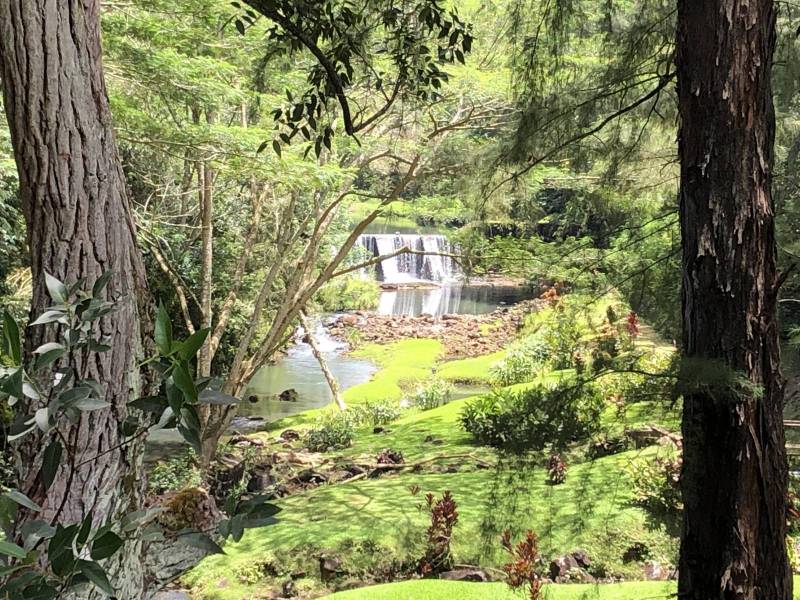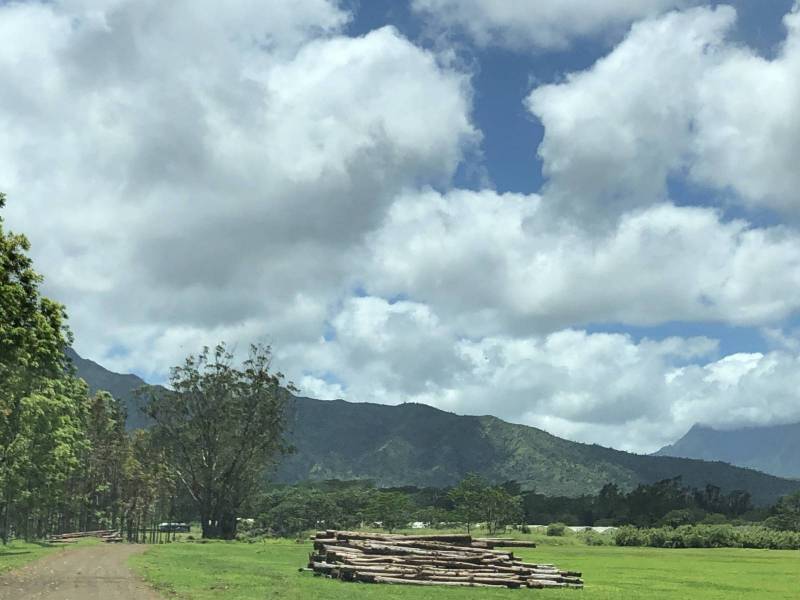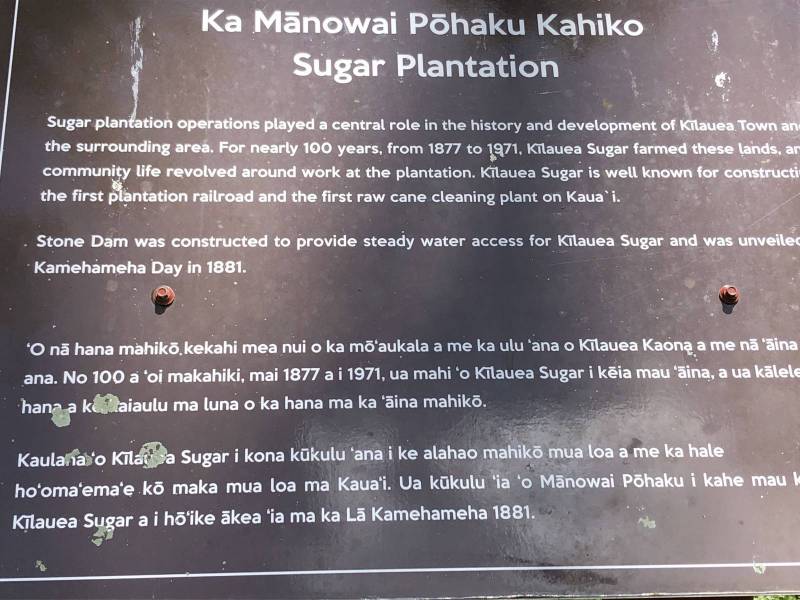I was on Kauai last month for a reception in conjunction with Hawaiian Islands Land Trustʻs quarterly board meeting, and had an opportunity to visit their latest conservation easement on the island. The 4 mile long Wai Koa Loop trail already allows pedestrians to walk through a portion of a legacy land property of more than 500 acres. This conservation easement dedicates the Wai Koa Loop Trail to public access in perpetuity.

This Stone Dam is over 100 years old and is included in the conservation easement for the trail.
Types of Conservation Easements
What is a “conservation easement?” Unlike an outright purchase of a property by a conservation organization or government entity, the property owner granting a conservation easement continues to own the property, but creates a legal agreement which restricts the use of all or a portion of their land in order to protect “conservation values.”
Conservation values a landowner might choose to protect include wildlife habitat, culturally or historically significant land features, agricultural usage…or as in this case, dedicating the use of portions of their property for the public to enjoy the scenic and historical characteristics of a large legacy parcel. (Another of my blog posts gave an example of protecting coffee farms with an agricultural easement in South Kona.)

Mountain views from another portion of the Wai Koa Plantation – a legacy land property with multiple uses
Why we talk about “Legacy Lands” and not just “Conservation Properties”
Conservation and other uses, including development, often go hand in hand, especially on larger properties in Hawaiʻi.
Wai Koa Plantation in Kilauea on Kauaʻi is a perfect example of this. The Porters, owners of this land for the past decade, acquired a legacy parcel with plantation-era history, the largest mahogany forest in the United States, stunning views of the Namahana Mountains, and development potential.
Portions of the property remain in agriculture, with the mahogany plantation, greenhouses growing vegetables for the community, and a bit of ranching. Eight acres have been set aside for a community organization to build a charter school, next to a dog park that is open from dawn to dusk daily.

Wai Koa Plantation is an example of why I prefer to speak about “legacy lands” and not just “conservation.” Here the landowners have recognized the historic and agricultural heritage of their property, made portions available to various initiatives supported by the North Shore Community Foundation, and still have portions of the property available for development on a modest scale, if that were a future direction of choice.
If you are the owner of a substantial property with conservation values in the islands and would like to learn more about conservation easements, we are here to help. Or if you are interested in acquiring a legacy property in Hawaiʻi, we can help you approach the purchase in a sensitive way and envision the structure that might best support preserving its special characteristics.


Leave your opinion here. Please be nice. Your Email address will be kept private, this form is secure and we never spam you.